A visit to Vietnam wouldn’t be complete without tasting the succulent delicacy known as dragon fruit Vietnam, or ‘thanh long’ in the native tongue. With its vibrant pinky-red color, delicate appeal, and sweet taste of a tropical paradise all rolled into one, it is easy to see why this delicacy has won the hearts and taste buds of so many travelers worldwide. Whether you are tourist looking for something exotic and delicious to sample during your travels in Vietnam or just curious about how this captivating fruit grows and develops is part of Vietnamese culture, This article will guide you through it all!
Contents
Brief History of Dragon Fruit Vietnam
Dragon fruit, known as “thanh long” in Vietnam, was introduced to the country in the late 19th century by the French.
It quickly gained popularity among locals due to its unique flavor, stunning appearance, and health benefits. Despite facing challenges such as harsh weather conditions and intense competition in international markets, Vietnamese farmers continue to grow and cultivate dragon fruit with pride and passion.
Today, Vietnam is one of the world’s largest dragon fruit producers, with almost 90% of the fruit coming from the southern provinces of Binh Thuan, Tien Giang, and Long An.
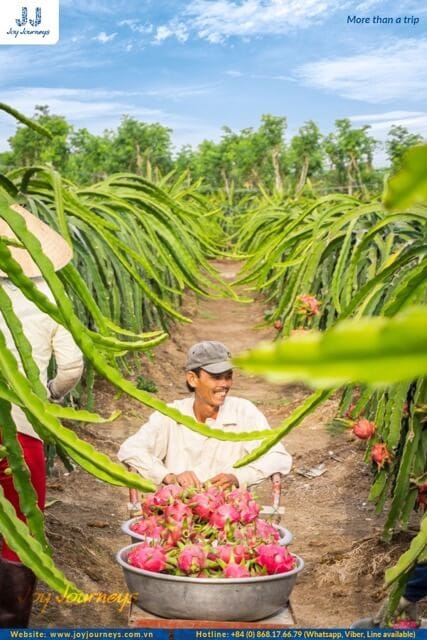
Since the 1980s, dragon fruit has been grown and produced in Vietnam, becoming an important and popular fruit in the country’s agriculture industry.
In addition to the southern provinces, other areas such as Dong Thap, Hau Giang, and Can Tho have also developed dragon fruit production. Dragon fruit production accounts for 10% of Vietnam’s total fruit production and contributes over 200 million USD to the national budget.
Vietnam has various dragon fruit, including red-fleshed, white-fleshed, yellow-fleshed, dried dragon fruit, and different processed products such as dragon fruit jam, juice, and wine. These types of dragon fruit have unique flavors and aromas that cater to the demands of many different markets.
Dragon fruit Vietnam production and export have become a vital source of income for many farmers and businesses in Vietnam, contributing to the country’s economic development.
In particular, dragon fruit exports have grown rapidly in recent years, with Asia being the central market, including China, Japan, and South Korea. This has helped to increase the export value and raise incomes for many smallholder farmers in Vietnam.
With the increasing popularity of dragon fruit, destinations such as dragon fruit farms, markets, and orchards can become attractive tourist spots for visitors to explore Vietnam’s culture and cuisine.
Tourists can visit dragon fruit farms to learn about the cultivation and care of dragon fruit trees, participate in harvesting, and enjoy various processed products made from dragon fruit. Dragon fruit markets are also interesting destinations to discover local products from dragon fruit and other goods.
Vietnam White Dragon Fruit
Vietnam white dragon fruit is a unique and prized delicacy known for its striking appearance.
It has an oblong or oval shape, typically around 10-12 centimeters, with a color that ranges from a pale yellow to a deep pinkish-red. The fruit is covered in pointed scales, giving it a dragon-like appearance.

The Vietnam white dragon fruit has a distinctively crispy texture that is accompanied by a subtle sweetness, making it stand out from other dragon fruit varieties. Moreover, the fruit is known for its refreshingly tasty juice full of vitamins and antioxidants.
In addition to its delicious taste, Vietnam white dragon fruit is highly nutritious. It contains various vitamins and minerals, such as vitamin C, vitamin B2, iron, calcium, and phosphorus, essential for boosting the immune system and promoting digestion.
The antioxidants present in the fruit are also beneficial in preventing cell damage and reducing inflammation in the body. Regular consumption of Vietnam white dragon fruit can also lead to healthier-looking skin, improved eyesight, and a reduced risk of chronic diseases like cancer and heart disease.
To ensure optimal growth and fruit quality, Vietnam white dragon fruit requires specific growing conditions.
The plant thrives in soil with good drainage and needs regular watering to moisten the soil.
Additionally, it tolerates high temperatures and requires full sunlight exposure for proper development.
Harvesting should be done at the right time to ensure optimal flavor and quality when the skin turns yellow or pink with green scales.
To pick the fruit, gently twist it off the plant slightly upwardly.
Proper cultivation techniques and careful harvesting methods are key to ensuring that the Vietnam white dragon fruit develops fully and offers a delicious, nutrient-rich treat.
Vietnam Dragon Fruit Farm
Vietnam has established itself as a leading dragon fruit producer, with farms across different regions of the country.
These farms have significantly contributed to Vietnam’s agricultural industry, providing farmers with a source of income and boosting the country’s economy.

The farms vary in size and diversity, ranging from small family-owned plots to large-scale industrial operations.
Some regions, such as Binh Thuan province, are particularly well-known for their dragon fruit production, accounting for more than 80% of the country’s total output.
Vietnam’s dragon fruit farms have propelled the country to become a major player in the international market, with the fruit’s delicious taste and nutritional benefits making it a global commodity.
Dragon fruit farming is a crucial industry that supports many agricultural communities in Vietnam. The country is home to various dragon fruit farms, each with unique characteristics and practices.
While small family-owned farms are typical in rural areas and operate on traditional farming practices, commercial plantations are much larger and use modern technology to increase productivity.
These plantations often employ large numbers of workers who specialize in different aspects of growing dragon fruit. Regardless of the type of farm, dragon fruit farming remains an essential sector in Vietnam’s agriculture.
In addition to its breathtaking scenery and diverse culture, Vietnam is home to some of the world’s best dragon fruit farms.
A dragon fruit farm tour is an excellent way to experience firsthand how the fruit is grown, harvested, and packaged.
Visitors explore vast plantations with tremendous potential, learn trade secrets from farmers, and engage in a deliciously informative tasting session.
You’ll also have the opportunity to snap photos with the vibrant-looking fruit, which is incredibly nutritious.
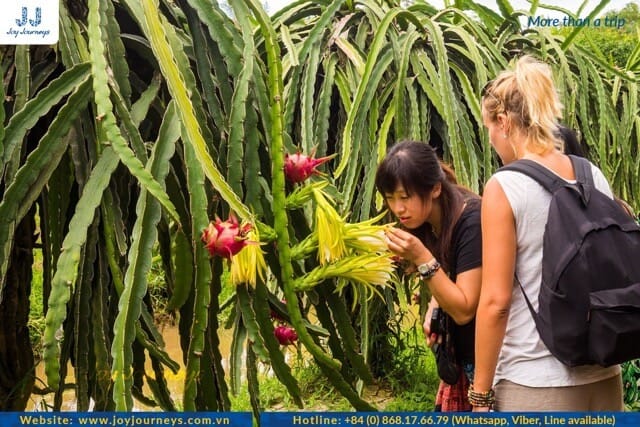
These tours are an excellent way for visitors of all ages to experience agriculture hands-on while gaining an appreciation for the country’s entrepreneurial spirit.
How Much Does Dragon Fruit Cost in Vietnam?
Dragon fruit, also known as pitaya, is a popular and nutritious in Vietnam. However, the price of this fruit can vary significantly depending on various factors.
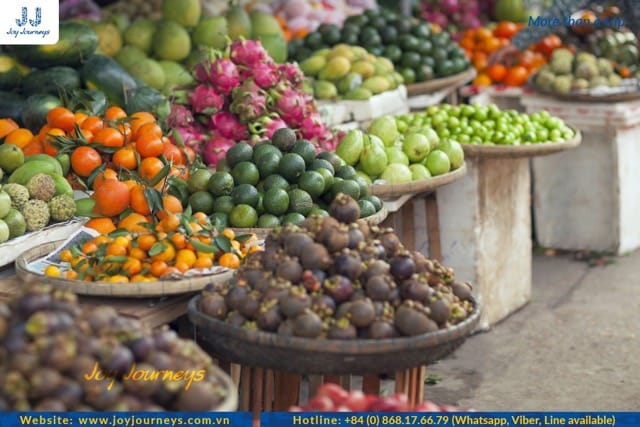
Firstly, the supply and demand of dragon fruit play a crucial role in determining its cost. When the need for dragon fruit is high, and the supply is low, the price will inevitably rise.
Additionally, seasonal fluctuations can also impact the price of dragon fruit, with peak season prices decreasing due to the abundance of fruit available.
External factors such as weather conditions and global market trends can also impact dragon fruit prices, with adverse effects on harvest yields leading to increased prices.
Vietnam’s dragon fruit prices also vary across different regions.
In the northern parts of the country, dragon fruit prices are generally lower due to the region’s higher concentration of dragon fruit farms.
In contrast, in the southern regions of Vietnam, where dragon fruits are in higher demand, the price point tends to be higher.
Factors like transportation costs and accessibility to the fruit can also play a role in regional pricing variations. With all these variables, predicting the future of the dragon fruit market in Vietnam is tough.
As a tourist in Vietnam, if you want to try the highest quality dragon fruit, you should watch for certain visual indicators.
Good dragon fruit should have bright and vivid skin with a uniform color throughout. It should also feel slightly firm, without any soft or mushy spots.
Local markets are the best places to buy dragon fruit, as vendors offer a range of high-quality products. Alternatively, look for reputable vendors with a history of selling quality fruit.
Overall, the price of dragon fruit in Vietnam is influenced by several factors, making it a fascinating topic for anyone interested in the country’s fruit industry.
Dragon Fruit in Vietnamese Cuisine and Culture
Its vibrant pink hue and sweet, refreshing flavor make it a unique addition to many classic dishes and beverages.
For example, one popular recipe is the dragon fruit shake, made by blending the fruit with ice, condensed milk, and coconut cream for a creamy and fruity drink.
Another beloved dish is the “goi thanh long,” or dragon fruit salad, which combines diced dragon fruit with shrimp, pork, and mint leaves for a refreshing and light meal.
Dragon fruit Vietnam is also used in desserts such as the “che thanh long,” a sweet soup made with coconut milk and tapioca pearls.
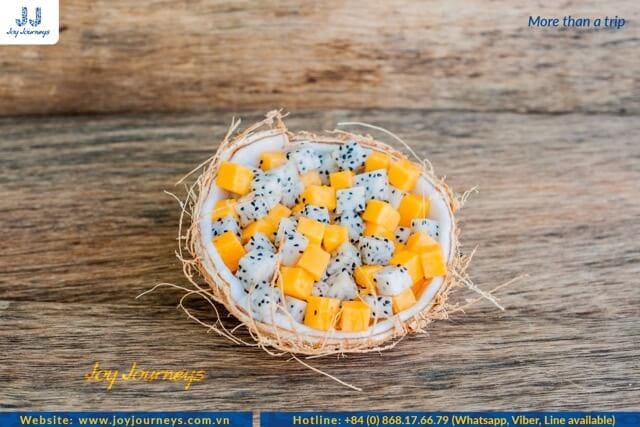
Moreover, dragon fruit holds cultural and symbolic significance in Vietnamese culture.
This exotic fruit is often used in Vietnamese rituals and traditions due to its unique appearance and association with good luck and prosperity.
Dragon fruit vietnam is believed to bring good fortune and success to those who consume it.
The fruit is particularly prominent during the Lunar New Year, where it is given as a gift between friends and family to symbolize a wish for a good year ahead.
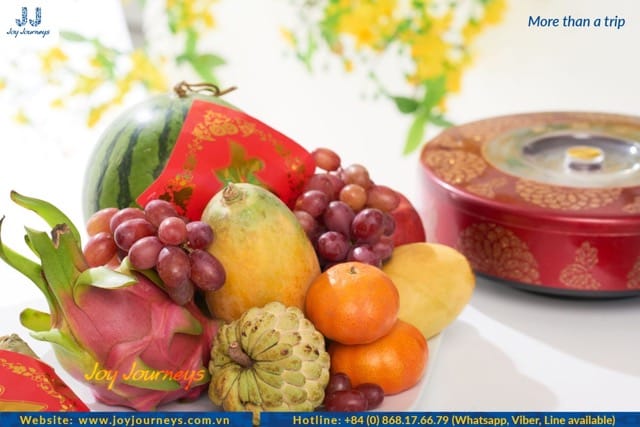
Also, dragon fruit is used in Vietnamese weddings, representing prosperity and fertility. The bright pink color and unique shape of dragon fruit make it a staple fruit in various Vietnamese festivities and rituals.
Its cultural significance adds to its popularity, making it a delicious fruit and a cultural icon in Vietnam.
Overall, dragon fruit Vietnam is a beloved and versatile ingredient in Vietnamese cuisine, with cultural and symbolic importance passed down through generations.
Its sweet and refreshing taste and cultural significance make it an intriguing fruit to explore for anyone interested in Vietnamese cuisine and culture.
Conclusion
As we have seen in this article, dragon fruit is an important part of Vietnamese culture. It’s a cherished symbol of the country and its people – especially during special occasions – and it’s well-loved throughout the country for its extraordinary flavor and high content of healthy vitamins and minerals.
It is cultivated on large plantations in both white and red varieties due to its deep roots in rural economics. Whether you go to Vietnam for food, scenery, or sightseeing, get a taste of this amazing fruit in some form or another!
Now that you know more about the history and cultivation of dragon fruit Vietnam, pay it some respect during your next visit – you won’t regret it!


Related Posts
Saigon’s “Flower Market Replica”: Where To Find Them
Ho Chi Minh City’s floral charm is not limited to its bustling wholesale markets. Imagine wandering through a place where vibrant petals, fragrant blooms, and the spirit of traditional Vietnamese markets come alive—without the overwhelming crowds. A flower market replica captures that magic, blending the beauty of fresh flowers with the charm of a curated, […]
Is it Safe to Travel to Vietnam Right Now? A Complete 2025 Guide
Vietnam has emerged as one of Southeast Asia’s most captivating destinations, drawing millions of visitors annually with its rich culture, stunning landscapes, and incredible cuisine. However, many travelers still ask: Is it safe to travel to Vietnam right now? This comprehensive guide provides you with everything you need to know about Vietnam travel safety in […]
Ho Chi Minh Cu Chi Tunnels Tour: The Ultimate Guide
The Cu Chi Tunnels stand as one of Vietnam’s most remarkable historical sites, offering visitors a profound glimpse into the ingenuity and resilience displayed during the Vietnam War. For travelers, a Ho Chi Minh Cu Chi tunnels tour represents an essential experience that combines education, adventure, and deep cultural understanding. This comprehensive guide will help […]